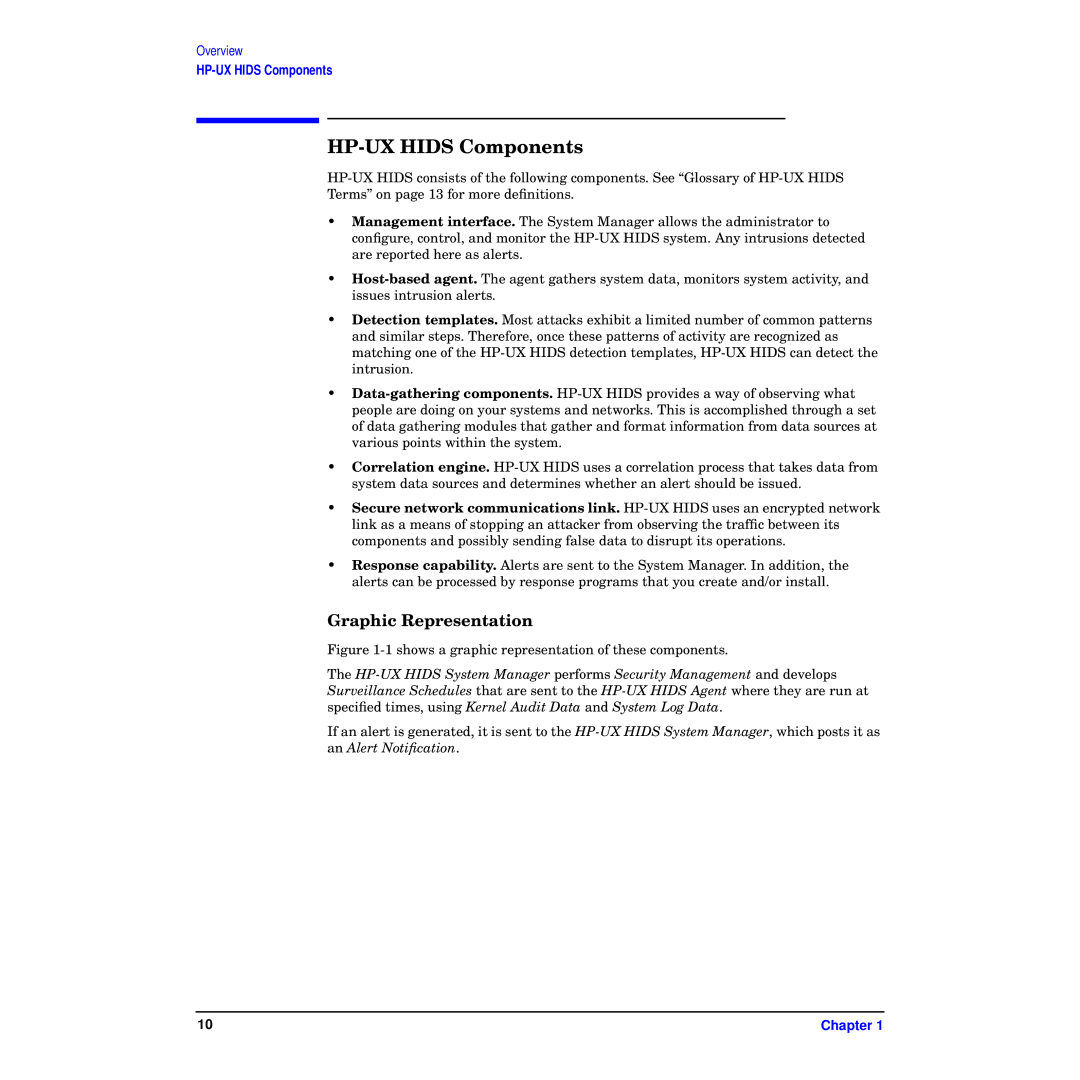
Overview
HP-UX HIDS Components
•Management interface. The System Manager allows the administrator to configure, control, and monitor the
•
•Detection templates. Most attacks exhibit a limited number of common patterns and similar steps. Therefore, once these patterns of activity are recognized as matching one of the
•
•Correlation engine.
•Secure network communications link.
•Response capability. Alerts are sent to the System Manager. In addition, the alerts can be processed by response programs that you create and/or install.
Graphic Representation
Figure 1-1 shows a graphic representation of these components.
The
If an alert is generated, it is sent to the
10 | Chapter 1 |
